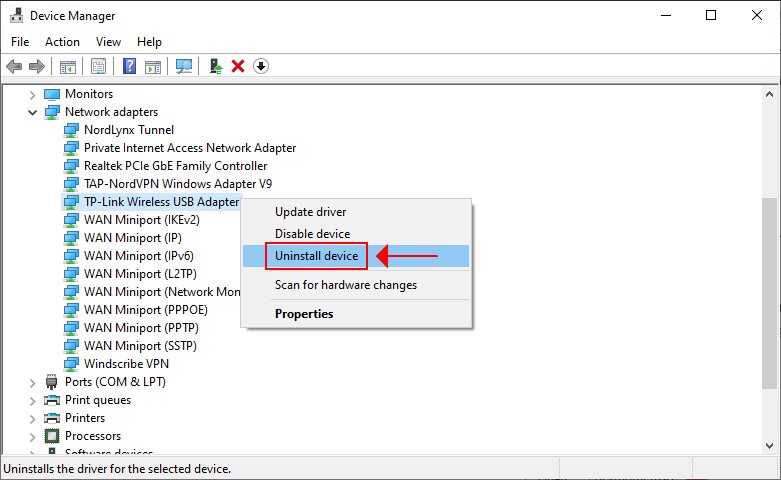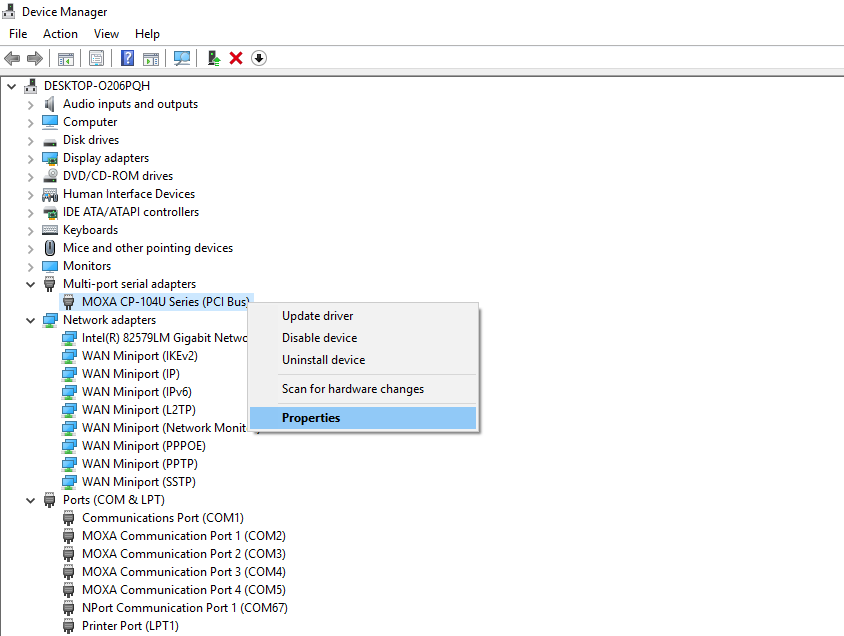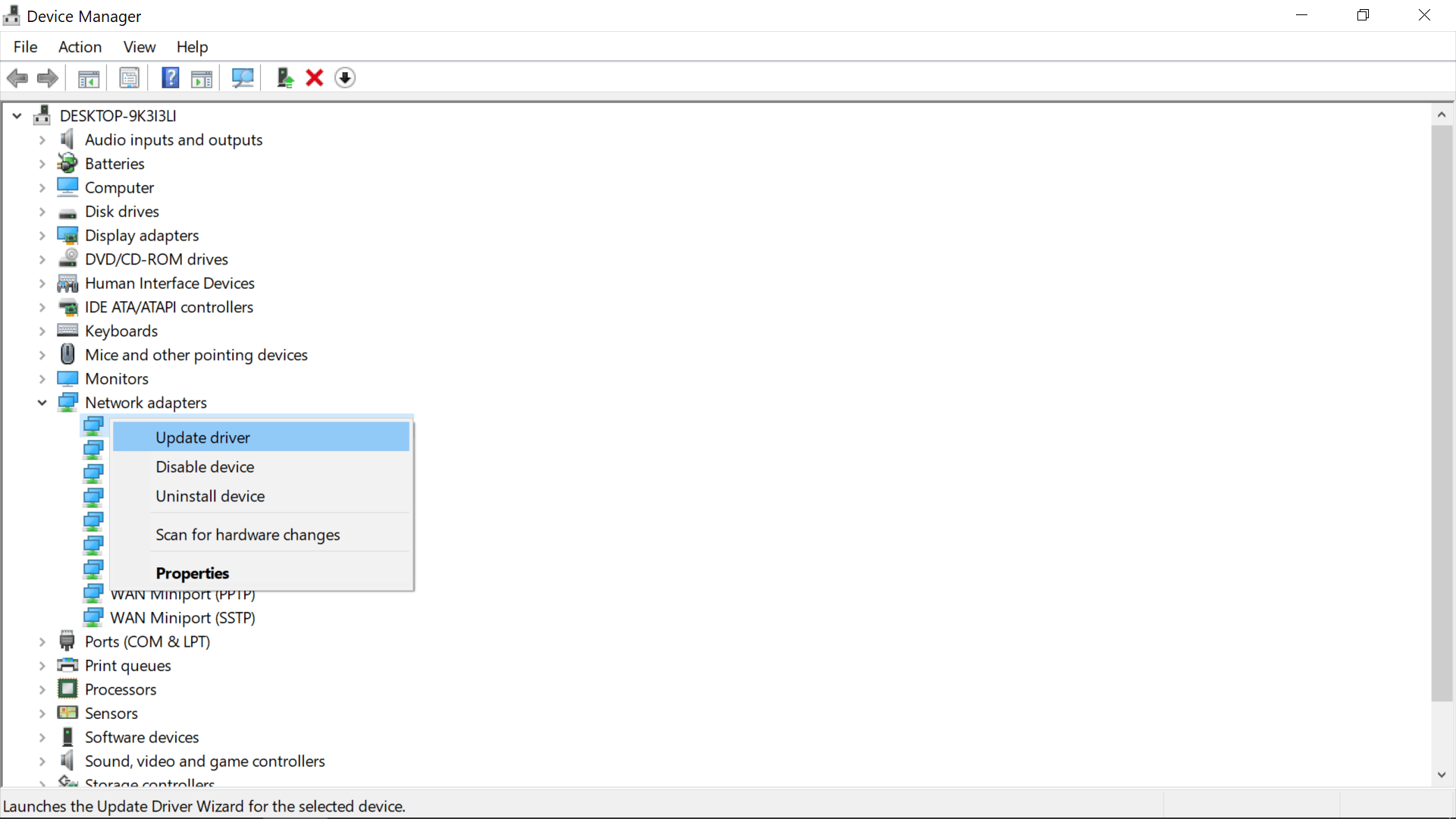Having an issue with your display, audio, or touchpad? Whether you're working on an Alienware, Inspiron, Latitude, or other Dell product, driver updates keep your device running at top performance. Step 1: Identify your product above. Step 2: Run the detect drivers scan to see available updates. Step 3: Choose which driver updates to install. NS-Link™ Device Drivers. DeviceMaster® NS-Link device drivers support the DeviceMaster family. NS-Link device drivers are available for Windows and Linux operating systems. Install the NS-Link device driver to use DeviceMaster serial ports as COM or tty ports. You can use the Windows® driver to also set up secure COM ports. The IoReportDetectedDevice call marks the port as a root-enumerated device. On subsequent system boots, the Plug and Play manager automatically configures the device based on the information in its INF file. The Plug and Play manager creates the following compatible IDs for a legacy COM port: DETECTEDInternal Serial and DETECTED Serial.
First, start the PC client. You’ll find a shortcut to DroidCam Client under Start Menu and on your Desktop.
If there is a separate admin account on the system, these shortcuts will be created on that users Desktop/Start Menu during installation.
Connect via WiFi
1. Turn on WiFi on your phone and connect to your home network as you normally would.
2. Start the phone app. The app will show Wifi IP & Port information.
If the IP is all zeros (0.0.0.0) – you are not properly connected to a WiFi network.
3. On the PC client, make sure the connection method is “WiFi/LAN”. Enter the IP and Port as displayed on the phone. Click [start].

4. The phone app should start showing the camera output. The PC client should start updating the “webcam” output, you can check in Skype/Zoom/etc. Find ‘video input’ settings in the options/preferences of these programs.
If the connection fails, try:
– Closing and re-opening the app
– Toggling the Wifi on phone and/or laptop
– Restarting your Wifi router (unplug from power, wait a few seconds, and plug it back in)
– Changing the connection port number in the app & client (eg. 4748 …)
Connect via USB (Android)
For USB connections, you need to: a. enable USB Debugging on the phone, b. install drivers for your phone on the computer.1. First, make sure “USB Debugging” is enabled on your phone. Its located in the phones Settings, under Developer Options.
On most phones the Developer Options screen is hidden by default. To unlock it, open the phones Settings, go to About Phone and search for Build number. Tap Build Number seven times to unlock Developer options.
If you’re having trouble, try the instruction here: https://www.howtogeek.com/129728/how-to-access-the-developer-options-menu-and-enable-usb-debugging-on-android-4.2/
Once unlocked, search for USB Debugging and turn it On.
2. With “USB Debugging” turned on, connect your device to the computer via USB.
In the DroidCam PC client, pick the USB connection option and click the refresh button. The client will try to detect connected devices. If the client detects your phone, you’ll likely get a dialog on the phone asking Allow USB Debugging, you need to tap OK. You can also skip the next step.
3. If the device is not detected, you need to install drivers for it as an additional step.
If you have a Google Nexus/Pixel, or a OnePlus, get the Google USB drivers:
https://developer.android.com/studio/run/win-usb.
Samsung USB drivers:
https://developer.samsung.com/mobile/android-usb-driver.html
LG Mobile Drivers:
https://www.lg.com/us/support/help-library/lg-mobile-drivers-and-software-CT10000027-20150179827560.
For other brands, this page provides links to most manufacturers websites: http://developer.android.com/tools/extras/oem-usb.html#Drivers.
You can also do a web search, ADB Drivers for ____.
Eg: ADB Drivers for HTC.
After the drivers are installed, re-connect the device to the computer and try again to refresh the USB list on the DroidCam PC Client. On the phone you may get a dialog asking Allow USB Debugging, you need to tap OK.

4. Once the client detects the phone, click Start to establish a connection just like you would over WiFi.
If you get “connection reset”, “connect lost”, “error receiving video headers” errors:
(1) On the phone, make sure the DroidCam app is open and ready.
(2) On the phone, pull down the notification area and open “USB Options”. Try picking the ‘PTP’ (Picture Transfer), or ‘Camera’, or just ‘Charging’ mode.
If the connection is still failing, try
(1) If you skipped the driver installation step above, try installing the drivers for your phone manually. Sometimes Windows auto-installs incorrect ones.
(2) Try changing the ‘DroidCam Port’ setting in the app, and on the client. Use, for example, 4848, 5050, 5151, etc.
(3) Try this alternate USB setup tool. The tool will detect and setup local port forwarding against all connected devices. If it works, you can replace the adb folder under Program Files x86 > DroidCam with the one in this download.
Connect via USB (iOS)
USB connections for the iOS app require iTunes to be installed and that it detects your iDevice when you plug it in.Click the refresh button on the DroidCam Client ‘USB’ tab and any available iOS devices will be listed as a string of random characters, this is the unique ID of the device. Click Start to establish a connection just like you would over WiFi.
Notes:
– Make sure you have at least v6.2.3 of the Windows client which includes iOS support.
– The Windows Store version of iTunes may not have the necessary components for this to work. If you have the Windows Store version of iTunes and the DroidCam client is not detecting any devices, try re-installing iTunes manually by following the “Windows” link, or see this help article by Apple.
Connect with internet browsers (Android)
To use the “IP Cam” feature you normally don’t need to install any extra software on the computer.
1. Turn on WiFi on your phone and connect to a WiFi network as you normally would.
2. The app will show Wifi network name, and IP & Port information. If the IP is all zeros (0.0.0.0) – you are not properly connected to a network.
3. Open your internet browser (Firefox, Chrome, etc), and enter http://ip:port into the address bar (replace these with the actual ip and port values from the app). This should open a web page with the camera feed embedded inside.
Tip: Use an MJPEG viewer app or program to access the raw feed via http://ip:port/video (eg. on a Tablet, another smartphone, or a media player such as VLC). You can also specify resolution in the URL, and use the word “force” if you’d like to override any existing connections: http://ip:port/video.force?1280×720.
This can be handy is you want to connect many devices to eg. OBS Studio. If you’d like to connect over USB using the http method, use this USB setup tool which will create local port mappings to all connected phones via adb and the special 127.0.0.1 IP address.
WiFi Hotspots, USB Tethering, USB-C Ethernet
Both USB Tethering and WiFi Hotspot connections with your phone can work with DroidCam. Some phones also work with USB-C to Ethernet wired connections.On Android, you’ll need to find the IP address of the phone and enter that into the WiFi tab of the DroidCam client.
The easiest way is to open the phones Settings, scroll down to “System” or “About”, and look for the ‘Network’ section.
On iOS, for USB Tethering you can use standard USB connection option in the DroidCam client (see above).
For WiFi hotspots, try these standard IPs 172.20.10.1, 10.0.0.1, 192.168.0.1. Alternatively, on your PC open the Start menu and launch the Command Prompt program. Enter ipconfig command, and look for ‘router’ or ‘gateway’ address, and use that as the phone IP.
Drivers rohde & schwarz 1394. WiFi Server Mode (DroidCamX only)
Instead of connecting to the phone app from the PC client, DroidCamX can connect to PC client(s) from the phone.1. Use the “WiFi Server” option on the PC client. Click [Start] to wait for a connection.
3. Open DroidCamX on your phone, use the options menu (⋮) and choose “Connect to Server”. You will need the computers local IP address (usually 192.168…) – look in your network settings or open a Command Prompt and type in ipconfig.
Back to Home Page | How to switch to 720p
A Windows printer definition includes a port and device driver. For standard output devices, you can use port and device driver pairs supplied by Microsoft or a printer vendor. For output and input devices unique to the Barr software, you can use the port and device driver pairs supplied with BARR/SPOOL.

Different port and device driver pairs are used to direct data into and out of the spool. Which port and device driver combination you use in a particular instance depends on both the data source and the intended data destination. Drivers format data as it exits a program. Ports control the flow of data to its destination.
The port and device driver combination you use for a Windows printer for BARR/SPOOL depends on whether the Windows printer is a source or destination for spool files.
When you input files to the spool or output files from the spool, you must use port and device driver pairs that correspond to the file format. The original file will be in one of two types of file formats: Barr formats or printer-specific formats.
Files in a Barr format require a Barr port and a Barr device driver. Examples of files in a Barr format include files sent with Print Utility or files input from an NJE host with the BARR/NJE module.
Examples of files in a printer-specific format include files from a Windows program such as Microsoft Word. Files in a printer-specific or destination-ready Data formatted for its ultimate destination. For example, if the data is intended for a printer, it becomes destination-ready when it gets converted to the format the intended printer requires. format require a port and device driver from the printer manufacturer.
When you use a printer-specific driver on inbound spool data, the file is converted only once (instead of twice), which speeds overall processing.
The following links provide descriptions of the available ports and examples of their use.
What do you want to do?
See also:
Port and device driver descriptions
The following tables list the available ports and device drivers, along with a description. The port and device driver combination you choose depends on both the data source and the intended data destination.
Ports
Option | Description |
Barr File port | Use only for spool output to computer disk destinations. |
Barr FTP port | Use only for spool output to an FTP host. |
Barr IP port | Use only for spool output to a TCP/IP socket or a Xerox DocuPrint EPS Acronym for Enterprise Printing System.. |
Barr LPR port | Use only for spool output, to route ASCII files to a TCP/IP LPD host. |
Barr NJE port | Use only for spool input to an NJE host. |
Barr PRINT390 port | Use only for spool output to S/390 channel output devices, such as S/390 channel printers. |
Barr RJE port | Use only for spool output to an RJE host. |
Barr Spool port | Use only for spool input from Windows programs. |
Local port (LPT1, COM1) | Use for output to local or network printers. |
Device drivers
Option | Description |
Barr ASCII printer driver | Use for spool output to legacy ASCII line printers. |
Barr EBCDIC printer driver | Use for spool input from Windows programs. |
Barr Jobs to Mainframe printer driver | Use for spool input intended for hosts and for spool output to hosts. |
Barr PRINT390 printer driver | Use for spool output to S/390 channel printers. |
Printer-specific driver | Use for spool input or output. |
Port and device driver examples
These examples list which port and device drivers you would use to define Windows printers for spool input and output for a specified file format, source, and destination.
Text file to PC-attached channel printer
Receive a text file from a Windows program and print to a channel printer.
Barr EBCDIC printer driver & Barr Spool port Spool
Barr PRINT390 printer driver & Barr PRINT390 port Channel device
Text file to local parallel printer

Receive a text file from a Windows program and print to a network printer.
Barr EBCDIC printer driver & Barr Spool port Spool
HP printer driver & network HP port LPT device
Text file to host (SYSIN)
Receive a JCL text file from a Windows program and send it to the host as a SYSIN job.
When SYSIN jobs are added to the Spool Window, they appear shaded in a light blue background.
For BARR/NJE
Barr Jobs to Mainframe printer driver & Barr Spool port Spool
Barr Jobs to Mainframe printer driver & Barr NJE port Host
For BARR/RJE
Barr Jobs to Mainframe printer driver & Barr Spool port Spool
Barr Jobs to Mainframe printer driver & Barr RJE port Host
Text file to host (SYSOUT)
Receive a text file from a Windows program and use BARR/NJE to send it to the host as a SYSOUT job.
BARR/RJE does not support sending SYSOUT data to the host.
Barr EBCDIC printer driver & Barr Spool port Spool
Barr Jobs to Mainframe printer driver & Barr NJE port Host
Native printer format (pass through) to network printer
Receive a raw file from a Windows program and send it to a network printer.
HPII driver & Barr Spool port Spool
Network HP LaserJet printer LPT device
Text file from Print Utility to local parallel printer
Use Print Utility to send a text file and print it to a parallel printer.
Network HP LaserJet printer LPT device
EBCDIC file from host to channel printer
Receive an EBCDIC file from an NJE host and print it to a channel printer.
Barr PRINT390 printer driver & Barr PRINT390 port Channel device
EBCDIC file from host to a client application
Receive an EBCDIC file with Print Channel from host and send it to a client application.
Barr ASCII driver & Barr IP port TCP/IP socket
Drivers Select Wireless Port Devices Bluetooth
